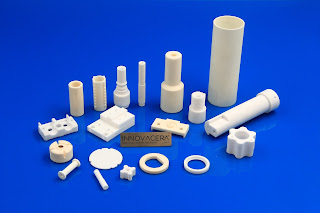Magnesium Stabilized Zirconia (MgO-ZrO2) Ceramic Nozzles
1. MgO-ZrO2 Ceramic Metering Nozzles (lnserts) They are mainly used in steel making continuous casting ladles, converter tundishes, and converter taphole slag retaining mechanisms. Features: Good erosion resistance, corrosion resistance Thermal shock stability The service time is generally 50 hours, which solves problems such as clogging, cracking and diameter expansion. Related general products: Continuous casting tundish upper nozzle Tundish quick change nozzle Fixed diameter nozzle for continuous casting. 2. MgO-ZrO2 Ceramic Atomizing Nozzles They are mainly used in the powder metallurgy industry, the smelting of ferrous and non-ferrous metal powders, such as nickel-based alloy powders, copper powders, stainless steel powders, iron powders and other super alloy powders. Features: Higher density, Excellent resistance to high temperature corrosion, Resistance to erosion by metallic liquids Thermal shock performance. Different stabilizer materials and particle sizes are used acco...

